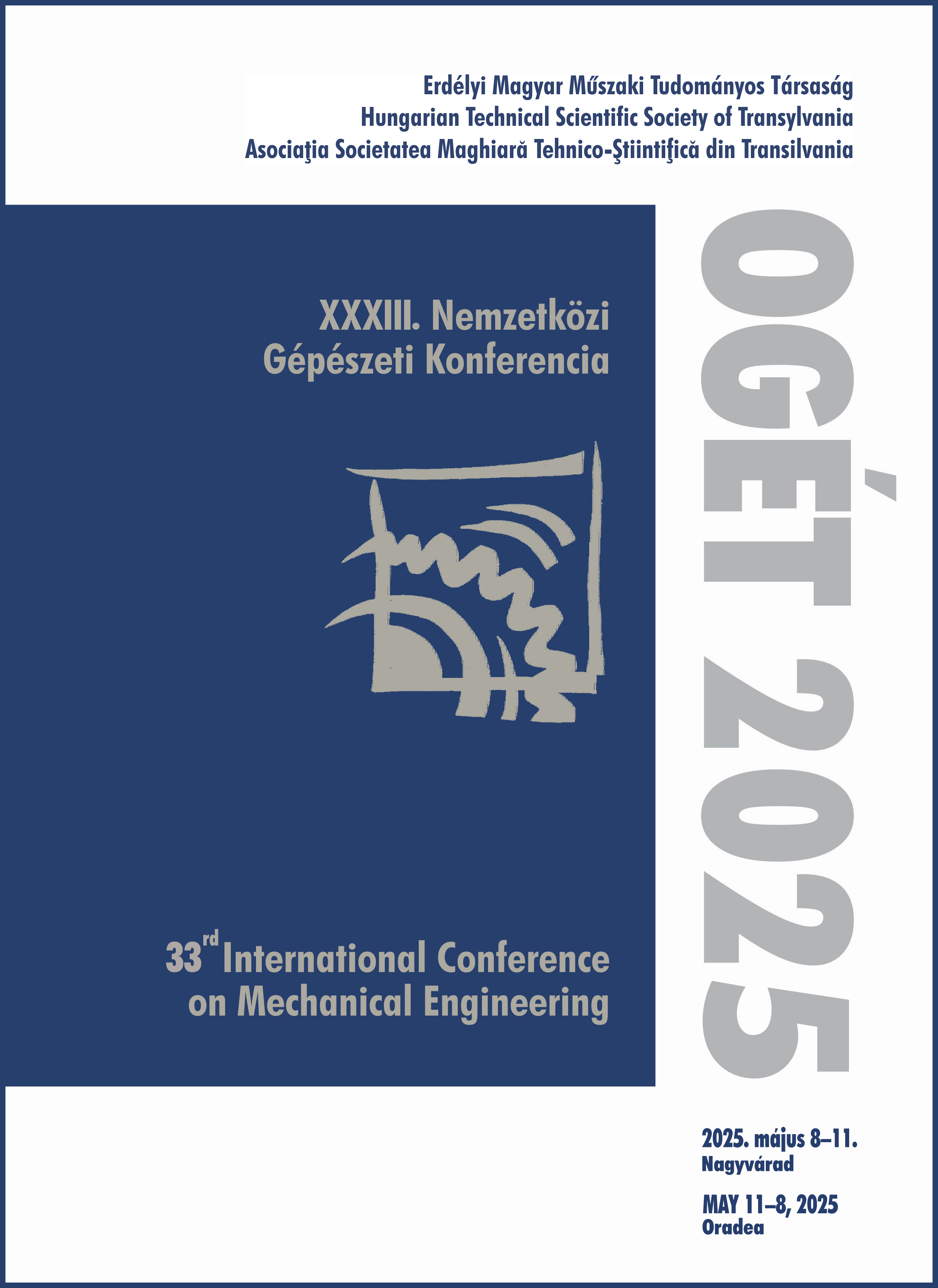Metabolikus és miogenikus szabályozás modellezése emberi vérkeringésben
Modelling the metabolic and myogenic control in human blood circulation
Keywords:
autoregulation, hemodynamics, vascular system model, low-dimensional simulation, /, autoreguláció, hemodinamika, , alacsony dimenziós szimuláció, érrendszeri modellAbstract
Realistic blood flow modeling could aid the work of physicians in the future, contributing to the preservation of people's health. An accurate simulation requires the modeling of certain control processes. Autoregulation is responsible for maintaining a constant blood supply to organs and tissues, regardless of changes [1]. The goal of this work is to introduce mathematical models that describe processes related to autoregulation within the framework of low-dimensional hemodynamic simulations. These include the myogenic and metabolic responses.
Kivonat
A véráramlás valósághű modellezése segítheti az orvosok munkáját a jövőben, ezzel hozzájárulva az emberek egészségének megőrzéséhez. A pontos szimulációhoz szükséges bizonyos szabályozó folyamatok modellezése is. Az autoreguláció felelős azért, hogy a szervek és szövetek vérellátása állandó maradjon, függetlenül a változó körülményektől [1]. A cél jelen munkával az autoregulációhoz kapcsolódó folyamatokat leíró matematikai modellek bemutatása alacsony dimenziós hemodinamikai szimulációk keretében. Ezek közé tartozik a miogén és a metabolikus válasz.
References
R. N. Pittman, Regulation of tissue oxygenation, Second edition. San Rafael, California: Morgan & Claypool, 2016.
W. F. Jackson, ‘Myogenic Tone in Peripheral Resistance Arteries and Arterioles: The Pressure Is On!’, Front. Physiol., vol. 12, p. 699517, Jul. 2021, doi: 10.3389/fphys.2021.699517.
U. Morbiducci et al., ‘Outflow Conditions for Image-Based Hemodynamic Models of the Carotid Bifurcation: Implications for Indicators of Abnormal Flow’, J. Biomech. Eng., vol. 132, no. 9, p. 091005, Sep. 2010, doi: 10.1115/1.4001886.
M. Jones-Muhammad and J. P. Warrington, ‘Redefining the cerebral autoregulatory range of blood pressures: Not as wide as previously reported’, Physiol. Rep., vol. 9, no. 17, p. e15006, Sep. 2021, doi: 10.14814/phy2.15006.
R. Wéber, D. Gyürki, and G. Paál, ‘First blood: An efficient, hybrid one- and zero-dimensional, modular hemodynamic solver’, Int. J. Numer. Methods Biomed. Eng., vol. 39, no. 5, p. e3701, May 2023, doi: 10.1002/cnm.3701.
M. S. Olufsen, ‘Structured tree outflow condition for blood flow in larger systemic arteries’, Am. J. Physiol., vol. 276, no. 1, pp. H257-268, Jan. 1999, doi: 10.1152/ajpheart.1999.276.1.H257.
W. Richárd, V. Márta, and P. György, ‘Improvement for the hemodynamic solver, First Blood, using the MacCormack scheme’, Biomech. Hung., vol. 17, no. 1, pp. 17–23, Jan. 1970, doi: 10.17489/biohun/2024/1/594.
F. Y. Liang, S. Takagi, R. Himeno, and H. Liu, ‘Biomechanical characterization of ventricular–arterial coupling during aging: A multi-scale model study’, J. Biomech., vol. 42, no. 6, pp. 692–704, Apr. 2009, doi: 10.1016/j.jbiomech.2009.01.010.
B. Müller et al., ‘High-resolution tomographic imaging of microvessels’, presented at the Optical Engineering + Applications, S. R. Stock, Ed., San Diego, California, USA, Aug. 2008, p. 70780B. doi: 10.1117/12.794157.
P. Brassard et al., ‘Losing the dogmatic view of cerebral autoregulation’, Physiol. Rep., vol. 9, no. 15, Aug. 2021, doi: 10.14814/phy2.14982.
K. Tlałka et al., ‘Local Sensitivity Analysis of a Closed-Loop in Silico Model of the Human Baroregulation’, in Computational Science – ICCS 2024, vol. 14835, L. Franco, C. De Mulatier, M. Paszynski, V. V. Krzhizhanovskaya, J. J. Dongarra, and P. M. A. Sloot, Eds., in Lecture Notes in Computer Science, vol. 14835. , Cham: Springer Nature Switzerland, 2024, pp. 173–187. doi: 10.1007/978-3-031-63772-8_17.


